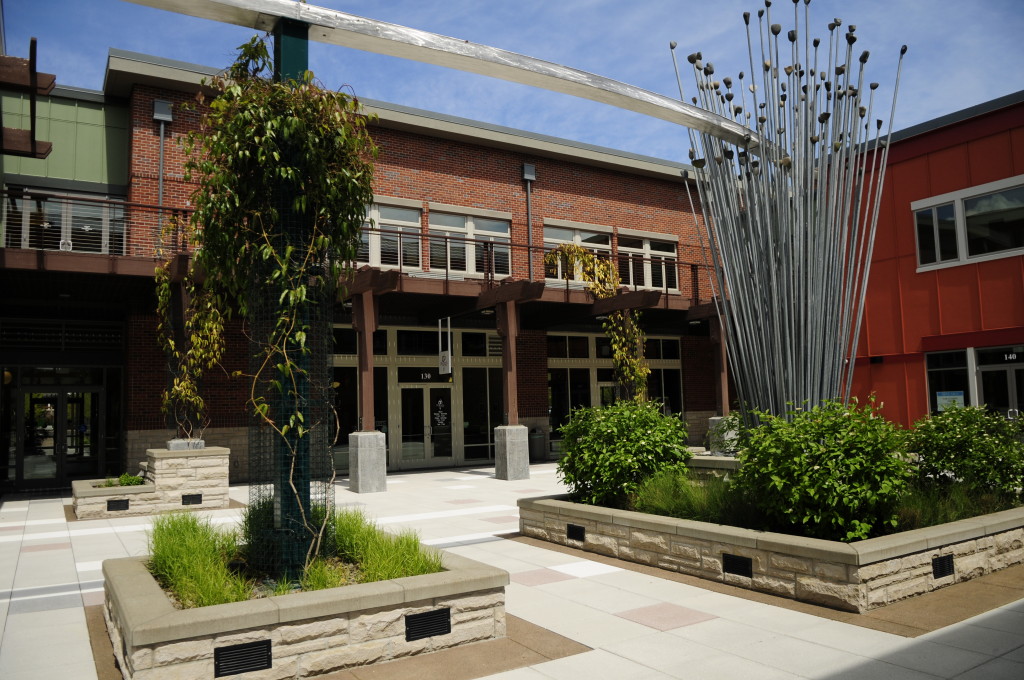A fabulous resource for landscape architecture is the recent publication from Wiley entitled Materials for Sustainable Sites and authored by Meg Calkins, LEED AP. Ms. Calkins, who is an educator at Ball State University and frequent writer on sustainable materials, has created a valuable must-have resource for site designers for evaluting truly sustainable materials for projects. Often used in our office, the resource is invaluable for life-cycle evaluation as well as a range of options for materials reuse in projects. Read
Jason King's review for a more in depth evaluation of the book and it's content.

In addition to being a fabulous resource, GreenWorks is excited that Ms. Calkins chose to showcase some of our projects relating to a number of sustainable materials uses, including reuse of concrete, use of natural and local materials use, and repurposing industrial materials for both sustainable and cultural relevance. The following project excerpts are from the book - along with the associated captions.

Figures CP4-CP5 - Concrete panels cut and removed from exterior building walls in a remodel were resued as site walls by artist Linda Wysong and GreenWorks. The concrete panels define spaces in the landscape, reference the history of the building, and reduce waste materials from the remodel. Holes cut in the concrete panels focus views (Photo from GreenWorks PC.)

- the confluence project
Figure CP17 -
Crushed oyster shell paving at the Confluence Project, commemorating the journey of Lewis and Clark, by Maya Lin and GreenWorks was obtained from nearby Oysterville, Washington, the Pacific Northwest hub of oyster production. This reused material from a local industrial waste product was crushed to a spec equivalent to one-quarter inch minus stone and installed four inches think in the Totem Circle (Photo from GreenWorks PC.)

- tanner springs park
Figures CP35-CP37 -
The undulating wall at Tanner Springs Park in Portland, constructed from reclaimed railroad rails, connects the current park site to its history. Atelier Dreiseitl and GreenWorks intended the wall to represent the 'skin' of the city being pulled back to expose the original wetland site prior to the railroad, industry, and the current mixed-use neighborhood. (Photo from GreenWorks PC.)







